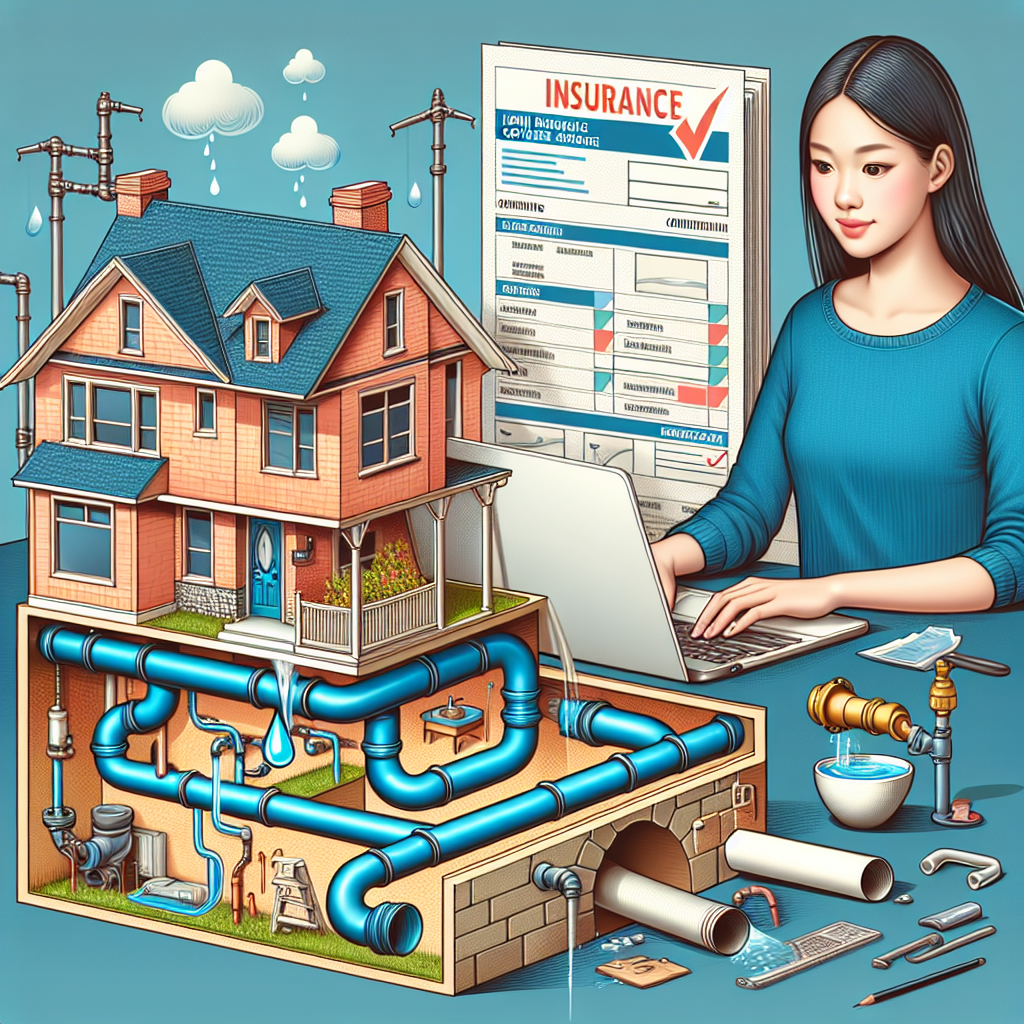Filed under Home Insurance on
Understanding Home Insurance for Plumbing Coverage

Home insurance is a crucial safeguard for homeowners, offering protection against a variety of unexpected events. While many are familiar with coverage for fires or natural disasters, fewer understand the nuances of home insurance for plumbing coverage. This aspect of insurance can prove essential, particularly when facing sudden leaks or burst pipes. In this article, we delve into the intricacies of plumbing coverage, ensuring you’re equipped with the knowledge needed to make informed decisions.
What is Home Insurance for Plumbing Coverage?
Home insurance for plumbing coverage refers to the portion of your homeowners insurance policy that covers damage related to plumbing issues. This could include water damage from a burst pipe or unexpected leaks. Understanding what exactly is covered under this type of insurance helps homeowners manage potential risks more effectively.
Types of Plumbing Issues Covered
- Burst Pipes: One of the most common claims, typically covered if caused by sudden or accidental incidents.
- Water Damage: Insurance often pays for damages from unexpected leaks, provided they’re not due to negligence.
- Sewer Backup: Coverage for sewer backups may require an additional endorsement, depending on your policy.
Common Exclusions
While home insurance for plumbing coverage is comprehensive, it usually comes with exclusions. Gradual damage from wear and tear, or negligence in maintenance, often forms the crux of these exclusions. It’s essential to regularly maintain your home’s plumbing system to avoid such pitfalls.
Understanding Policy Details
Each insurance provider structures their policies differently, which is why understanding specific terms related to home insurance for plumbing coverage is vital. Examine the extent of coverage, the deductibles, and any additional endorsements that may benefit you.
Reading the Fine Print
Policies vary significantly, and the devil is often in the details. Carefully review the fine print to understand:
- Coverage Limits: Know the maximum payout for plumbing-related claims.
- Deductibles: Understand what you pay out-of-pocket before your insurance kicks in.
- Additional Endorsements: Consider adding extra coverage for specific plumbing concerns like older piping systems.
The Importance of Maintenance
Preventative maintenance plays a critical role in sustaining your home’s plumbing system and ensuring coverage remains intact. Regular inspections and repairs not only extend the lifespan of your plumbing but also reduce the risk of claims denial due to neglect.
Best Practices
- Inspect pipes annually for signs of wear and tear.
- Ensure water pressure remains within safe limits to avoid pipe stress.
- Invest in a water leak detection system for early issue identification.
Filing a Claim for Plumbing Issues
When disaster strikes, knowing how to file a claim for plumbing issues effectively can make a significant difference in your recovery process. Understanding the steps involved and preparing beforehand can save time and stress.
Steps to File a Claim
- Document the Damage: Take photographs and videos for evidence.
- Contact Your Insurer: Notify your insurance company as soon as possible.
- Submit Required Documentation: Provide estimates, reports, and any other necessary paperwork.
- Meet the Adjuster: Coordinate with an insurance adjuster to assess the damage.
- Finalize the Claim: Work with your insurer to reach a settlement and begin repairs.
Expert Opinions on Plumbing Coverage
Industry experts often highlight the importance of understanding the intricacies of home insurance for plumbing coverage. Jane Doe, a seasoned insurance advisor, notes, "Homeowners must comprehensively explore their policies, ensuring they are prepared for unexpected plumbing emergencies."
Others emphasize the need for clear communication with insurance providers. John Smith, a plumbing expert, advises, "Discuss your home’s specific needs with your insurer. Tailoring your coverage now can prevent significant headaches later."
Latest Industry Trends
In recent years, the landscape of home insurance for plumbing coverage has evolved, with insurers offering more customized options. Emerging trends include the increasing use of technology in policy management and the integration of smart home devices to prevent plumbing issues before they escalate.
- Smart Technology: Devices providing alerts for leaks and pipe bursts are now influencing insurance policies.
- Customized Endorsements: Insurers are offering bespoke solutions, allowing homeowners to choose specific coverages based on their home's needs.
Choosing the Right Policy
Selecting the best home insurance for plumbing coverage requires careful consideration of various factors, from the age of your home’s plumbing system to the specific risks in your area. Conduct thorough research and consider consulting with a qualified insurance broker to navigate the options available.
Factors to Consider
- Home Age and Plumbing Type: Older homes with outdated plumbing may need more comprehensive coverage.
- Local Climate: Areas prone to freezing temperatures should ensure coverage for burst pipes.
- Budget Constraints: Balance between affordability and the necessary level of protection.
Ultimately, understanding home insurance for plumbing coverage empowers homeowners to protect their investments effectively. By staying informed and proactive, you can safeguard your home against potential plumbing pitfalls while ensuring peace of mind.




